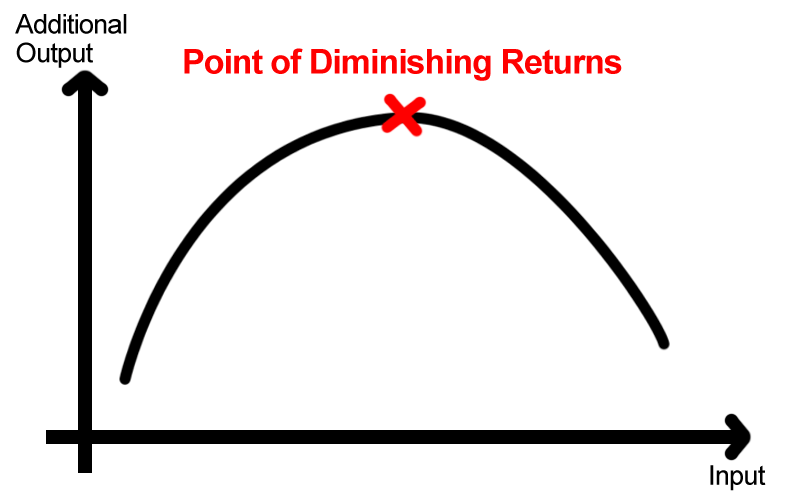
Pareto’s 80/20 Law teaches us how to get the greatest results. In a nutshell, it tells us that we get 80% of our results from 20% of our efforts. The flip side is also true. We expend 80% of our efforts in order to squeeze out the remaining 20%. The key, of course, is to identify the activities that will yield the greatest outcomes. The problem, however, is two-fold: Not only do we not know when to stop going after the little that is left, but we also lack the willingness to do so. It feels too much like leaving a job half-finished.
Perhaps this is one reason why change programs fail so often. We’re not content with what has been achieved, so instead, we waste precious resources going after that which probably won’t make much difference. The momentum is lost along the way and enthusiasm wanes.
In order to appreciate the insignificance of that additional 20%, we need to narrow it down a bit more. Let’s think only about that small percentage.
When Pareto’s Law is discussed, this part is often ignored. That’s because what we usually want you to understand is how much you can gain by focusing on the right things; but in this article, the goal is to show you how much you can lose by concentrating on the wrong ones.
If you take 80% of 80%, you get 64%, and if you take 20% of 20%, then you get four percent. This means that you are expending 64% of your efforts in order to get a measly four percent of the remaining possible results.
Let’s take this a step further. Eighty-percent of 64% is 51%, and 20% of four percent is less than one percent. Now think about what that means for your organization. Think about all that you do in your job, and all that everyone else does in theirs. You and they are spending more than half of the time, effort, and other resources available to get less than one percent of the outcomes that you said you wanted to obtain in the first place. Is it worth it?
If we plot these points on a graph, then it’s easy to see that the rate of change is curvilinear. Sometimes we refer to this phenomenon as the Law of Diminishing Returns. It explains why change of any kind, whether it’s in your organization or your personal life, becomes more difficult. It’s not that the methods are wrong in themselves. Instead it means that potential for change is uneven, and you must recognize that.
In theory, if you knew when you had reached the top, just before the slope began to flatten out, you’d stop. In practice, however, it doesn’t work like that. The truth is that when we’re experiencing success, none of us wants to quit. None of us has the wisdom to finish while we’re ahead. If we did, then we wouldn’t try to time the market, for example. We’d sell before we got burned.
How can you help your organization to change without getting bogged down pursuing that one percent, the four percent, or even the 20%? By consolidating your improvements.
Think of a military supply line. The army can only go so far on the supplies it can carry. If there are insufficient materials – food, medicine, and ammunition – at the base camp to be ferried to the front lines, then the troops will be stopped in their tracks. The Germans, for example, experienced this at the Battle of the Bulge. This offensive failed because their Tiger tanks ran out of fuel. The allies didn’t need to destroy all of them because when they ran out of gas the drivers simply climbed out and walked home.
How do you consolidate your improvements? You have to know what you’re aiming for before you start. You need to find a metric that will identify the improvements you would make if all of your objectives were met, and then draw a line under the 80% point. When you reach it, then you know that you’ve succeeded. But here’s where the discipline comes in. Even if it looks like you could get a bit further, you need to have the wisdom to stop. That’s because you know that from then on, it will take a great deal more effort to obtain that marginal change.
The key to making a success of this is clearly identifying where you will stop and then disciplining yourself to do so. After that, you need to give yourself some time to get used to the new routine. It could be a few weeks or months; but you must not rush back into the change process.
When things have settled down, the kinks have been worked out, and you begin to feel comfortable about what you’ve changed, then you can start again. Identify those improvements that you would make in order to achieve 100% of your objectives. Draw a line under the 80% point, and then get busy.
This is not a game, by the way. If you think that you’re simply playing with some numbers, then either get a different metric or hire someone who knows what he / she is doing.











